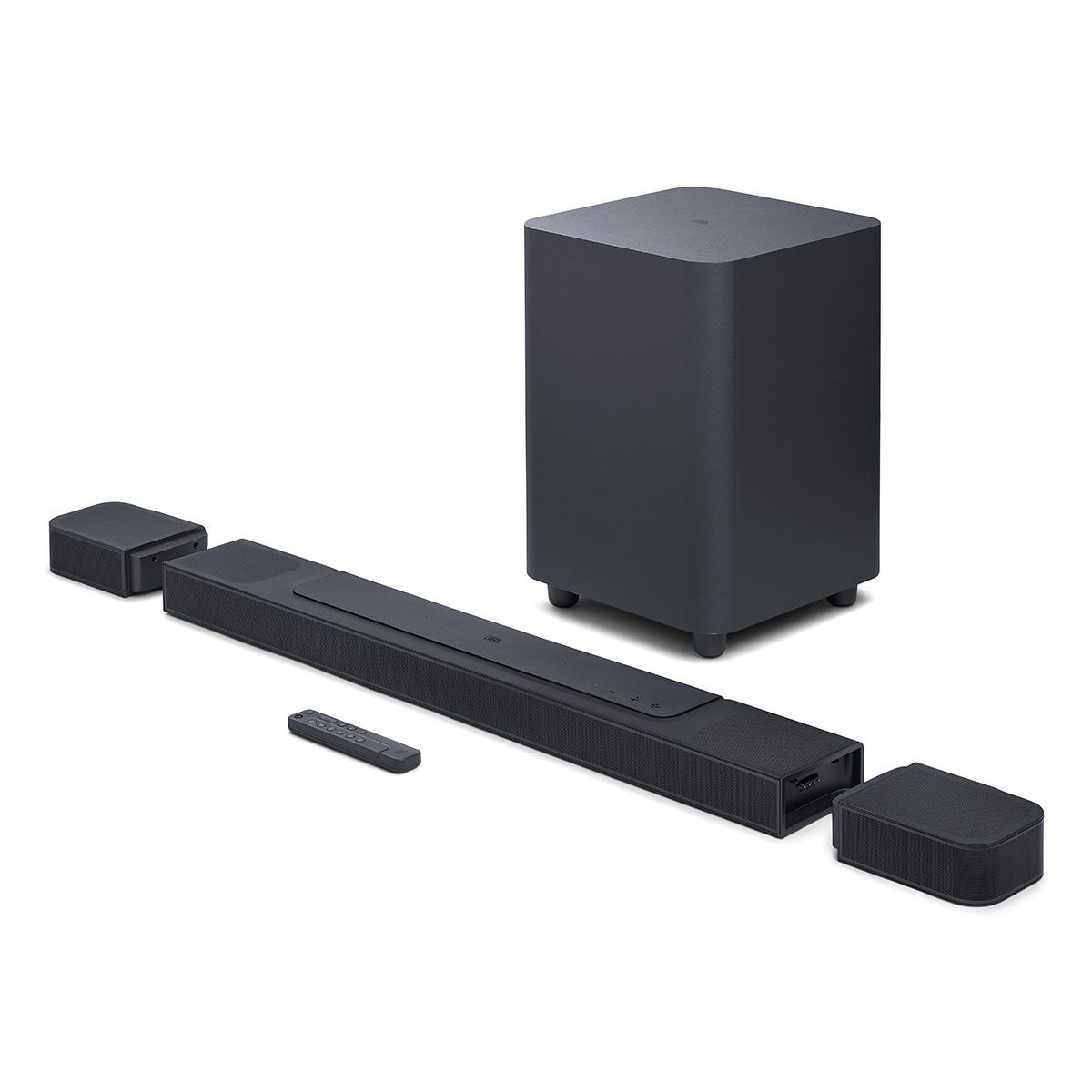
When it comes to creating an immersive home theater experience, today's premium soundbars offer an impressive alternative to complex speaker setups. I've had the chance to test both the JBL Bar 1000 ($1,139.95) and Samsung HW-Q990D ($1,997.99), and they each bring something special to the table. Let's dive into what makes these systems unique and help you figure out which one might be right for your setup.
Today's premium soundbars are a far cry from the simple stereo bars of a few years ago. They now use sophisticated audio processing and multiple speakers to create immersive 3D sound that can fill your room. Both of these systems support Dolby Atmos, which adds height channels to create a dome of sound above you - imagine hearing a helicopter actually moving overhead in your favorite action movie.
The JBL Bar 1000 was released in late 2022, while the Samsung HW-Q990D is a brand new 2024 model. This timing difference shows in some of their features, particularly in gaming support and HDMI capabilities.
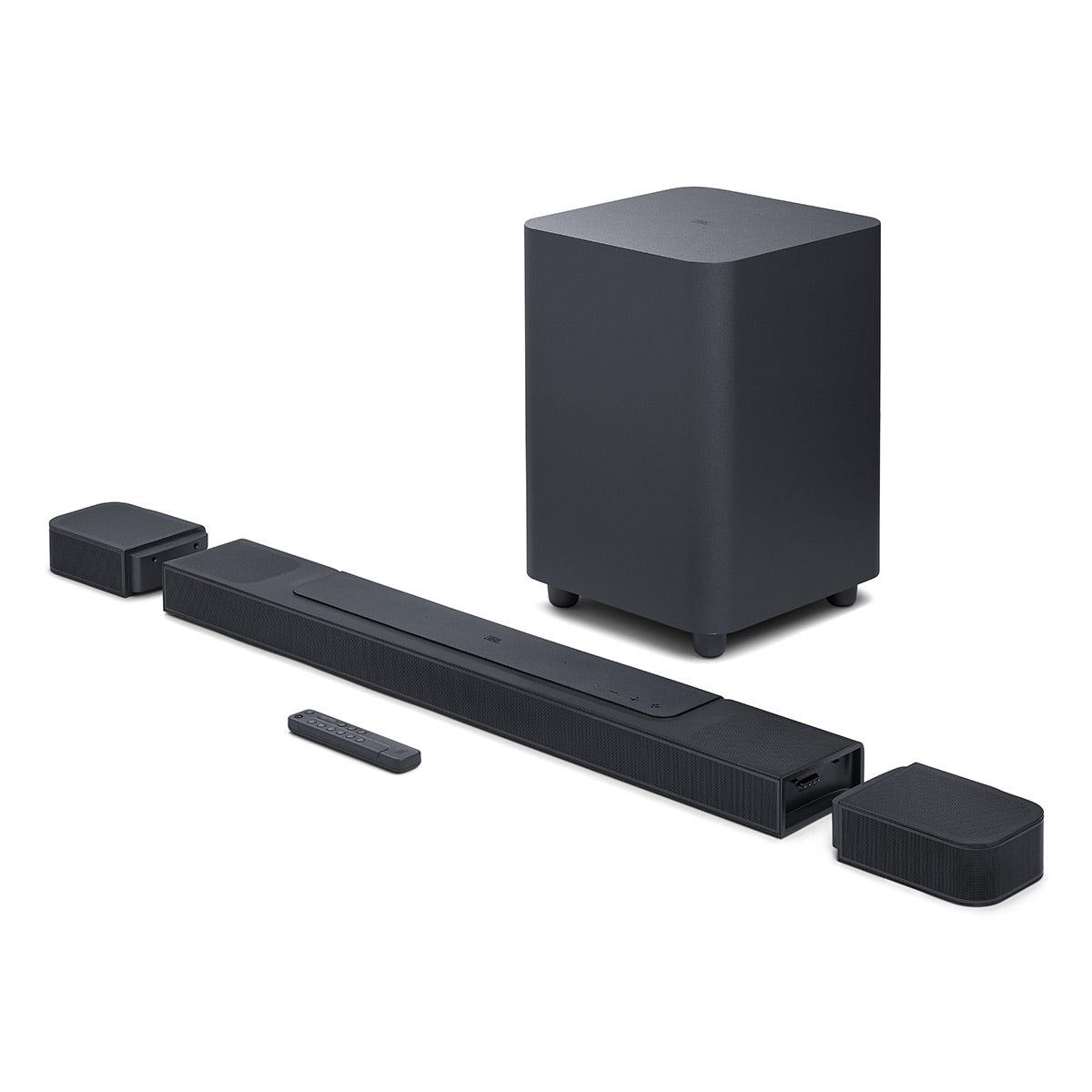
The JBL system takes an interesting approach with its 7.1.4 channel setup. The ".4" means four upward-firing speakers that bounce sound off your ceiling to create height effects. What makes it unique is the detachable rear speakers - they're battery-powered and can be placed anywhere in your room without worrying about power cables. In my testing, they last about 10 hours per charge, and you simply reattach them to the main bar for charging.
Samsung's system offers an 11.1.4 channel configuration, which means more discrete audio channels for even more precise sound placement. The rear speakers need to be plugged in, but they're wireless in terms of audio signal. The additional channels really show their worth in large rooms where the extra speakers help create a more cohesive sound field.
Both systems deliver excellent sound, but they have different strengths. The JBL's MultiBeam technology (which uses carefully angled speakers to reflect sound off your walls) creates a surprisingly wide soundstage. Its PureVoice feature does an impressive job keeping dialogue clear even during intense action scenes.
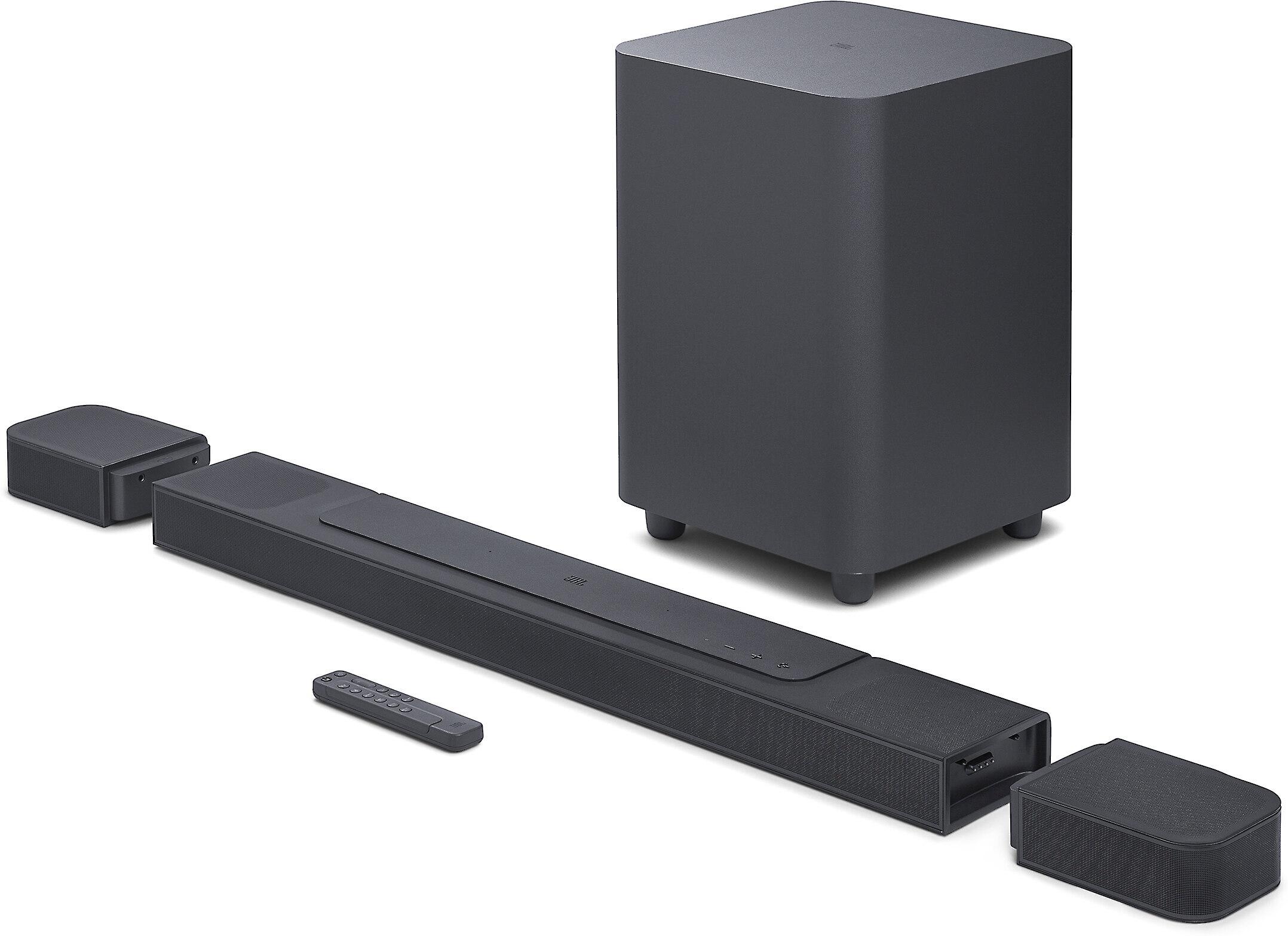
The Samsung system, with its additional channels, creates more precise sound placement. When testing with movies like "Dune" or "Top Gun: Maverick," the overhead effects were more distinctly placed. The Samsung also has more refined room correction through its SpaceFit Sound Pro feature, which continuously adjusts the sound based on your room's acoustics.
This is where the newer Samsung system really pulls ahead. It supports HDMI 2.1 with 4K 120Hz pass-through, which means it can handle the latest gaming consoles at their highest performance levels. The Game Mode Pro feature automatically optimizes sound based on what you're playing.
The JBL handles gaming well but lacks the latest HDMI 2.1 features. It's perfectly fine for casual gaming, but serious gamers might prefer the Samsung's more advanced capabilities.
Both systems offer modern connectivity options including Wi-Fi, Bluetooth, and HDMI eARC (which allows for high-quality audio transmission through a single cable). They both support major streaming services and can be controlled through smartphone apps.
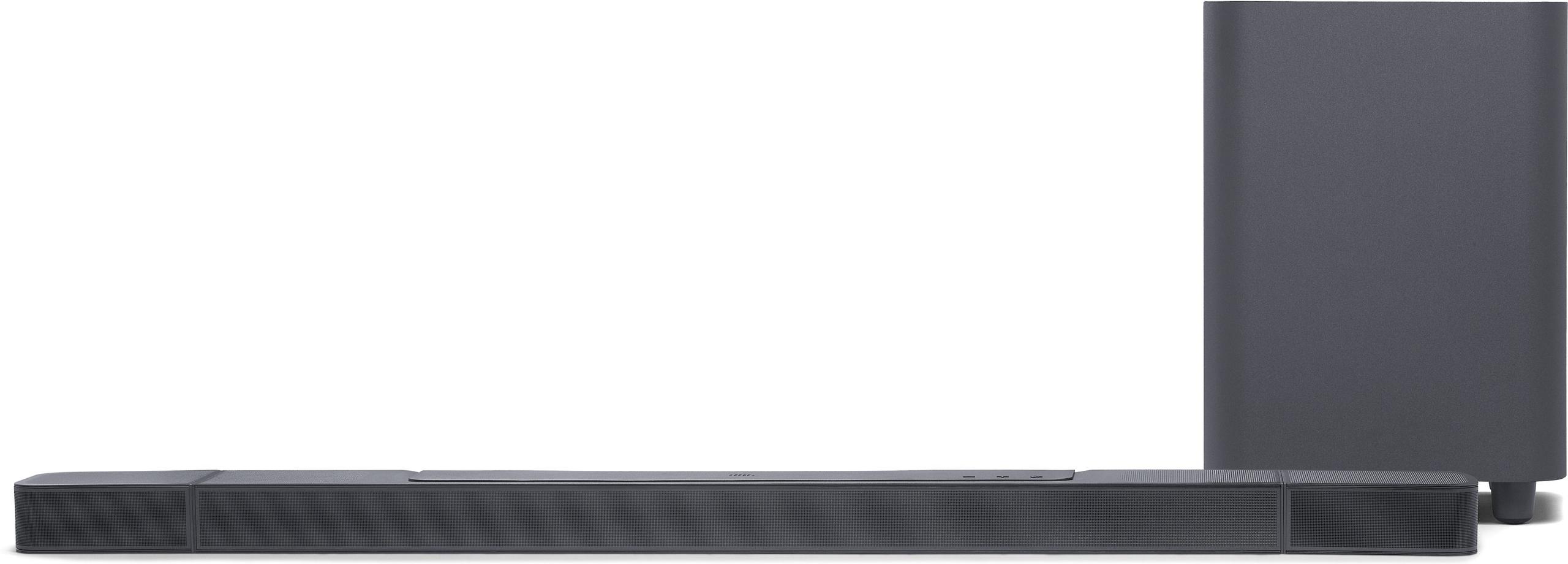
The Samsung system integrates particularly well with Samsung TVs through Q-Symphony, which lets the TV's speakers work together with the soundbar for an even fuller sound. If you own a Samsung TV, this feature alone might make the decision for you.
In my experience, the JBL system is more adaptable to different room layouts thanks to its battery-powered rear speakers. You can experiment with placement without worrying about power outlets, which is particularly useful in awkward room layouts or apartments.
The Samsung system, while less flexible in speaker placement, creates a more encompassing sound field in larger rooms. Its additional channels really shine in spaces over 300 square feet.
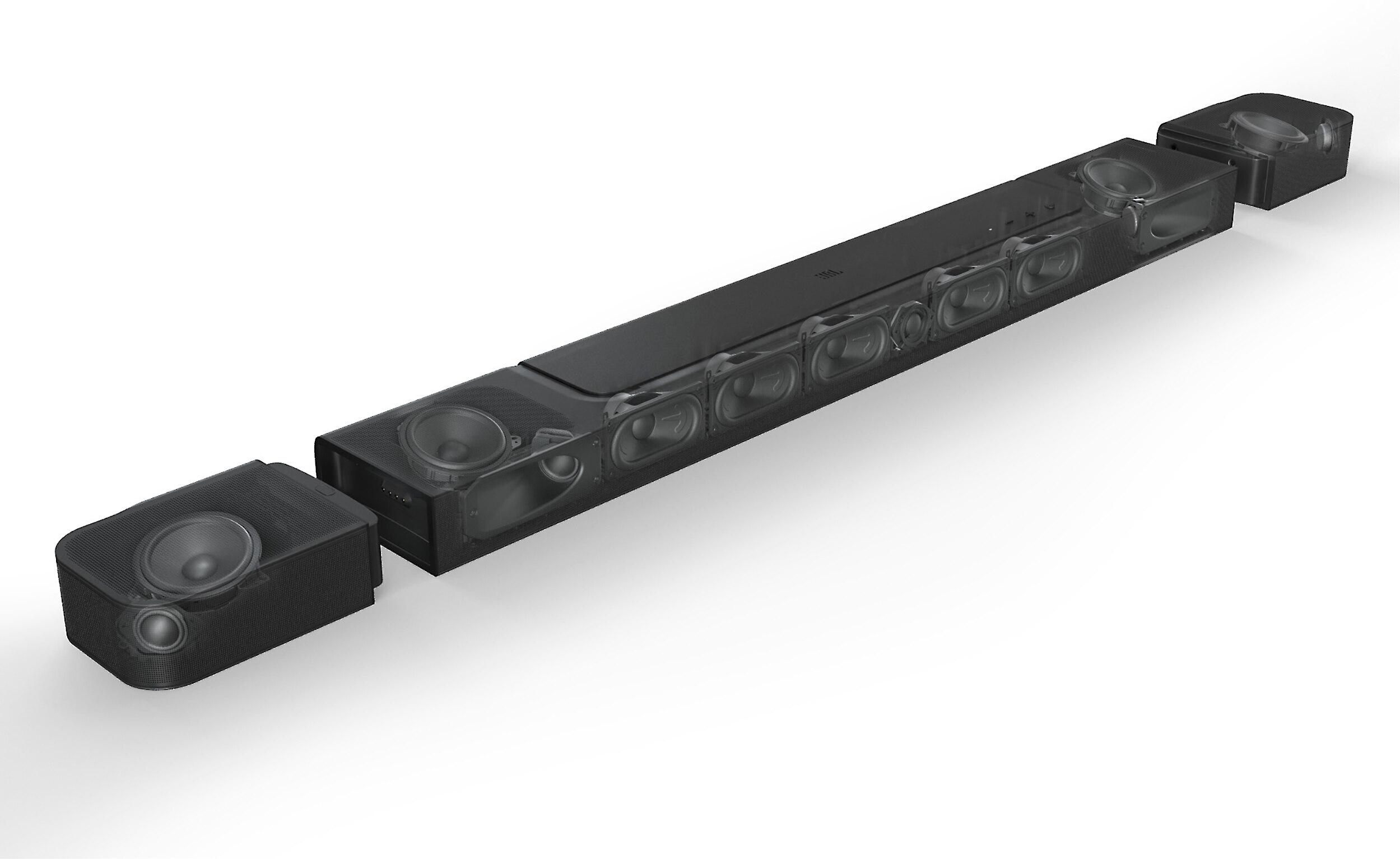
At about $860 less, the JBL Bar 1000 represents better value for most users. It delivers 80-90% of the Samsung's performance at a significantly lower price point. However, if you're building a serious home theater setup or are a dedicated gamer, the Samsung HW-Q990D's additional features and refined performance might justify its premium price.
Consider these key factors when choosing between these systems:
Both systems represent the current state of the art in soundbar technology, just aimed at slightly different users. The JBL Bar 1000 offers tremendous value and flexibility, making it my recommendation for most users. The Samsung HW-Q990D is the more technically capable system and worth its premium price for dedicated home theater enthusiasts or gamers who want the absolute best.
If you're upgrading from a basic soundbar or TV speakers, either system will be a dramatic improvement. The choice really comes down to your specific needs, room layout, and budget rather than any significant quality difference between the two.
| JBL Bar 1000 - $1,139.95 | Samsung HW-Q990D - $1,997.99 |
|---|---|
| Channel Configuration - More channels generally mean more precise sound placement | |
| 7.1.4 channels | 11.1.4 channels (worth it for larger rooms) |
| Total Power Output - Impacts maximum volume and dynamic range | |
| 880W | 1,500W (noticeable in larger spaces) |
| Rear Speaker Design - Affects placement flexibility and setup | |
| Detachable, battery-powered (10hr battery life) | Fixed wireless, requires power outlet |
| HDMI Ports - Determines connectivity options | |
| 1 HDMI eARC, 1 HDMI in | 1 HDMI eARC, 2 HDMI 2.1 inputs (better for gaming) |
| Room Calibration - Impacts sound optimization | |
| Basic calibration with built-in mic | SpaceFit Sound Pro with continuous adjustment |
| Gaming Features - Critical for next-gen console gaming | |
| Basic 4K/60Hz pass-through | 4K/120Hz, VRR, ALLM (worth it for serious gamers) |
| Special Features - Adds value for specific use cases | |
| MultiBeam and PureVoice technology | Q-Symphony with Samsung TVs, Game Mode Pro |
| Subwoofer Size - Affects bass performance | |
| 10-inch wireless sub | 8-inch wireless sub (both perform well) |
| Height Channels - Creates overhead sound effects | |
| 4 up-firing speakers | 4 up-firing speakers (similar performance) |
| Voice Assistant Support - Enables smart control | |
| Alexa, Google Assistant | Alexa, Google Assistant, Bixby |
The Samsung HW-Q990D offers superior performance for dedicated home theaters with its 11.1.4 channels and advanced room calibration. However, the JBL Bar 1000 provides excellent value and similar performance for most users at a lower price point.
Both systems deliver excellent Dolby Atmos, but the Samsung HW-Q990D's additional channels create more precise overhead effects and a wider soundstage. The difference is most noticeable in larger rooms.
The JBL Bar 1000 costs $1,139.95, while the Samsung HW-Q990D is priced at $1,997.99 - a difference of approximately $860.
The Samsung HW-Q990D is superior for gaming with HDMI 2.1 support, 4K/120Hz pass-through, and Game Mode Pro features. The JBL Bar 1000 handles gaming well but lacks these advanced features.
The JBL Bar 1000's rear speakers are battery-powered with 10 hours of playback, while Samsung HW-Q990D's rear speakers require constant power connection.
The JBL Bar 1000 offers easier setup due to its battery-powered rear speakers and simpler calibration. The Samsung HW-Q990D requires more planning for speaker placement but offers more advanced auto-calibration.
Both systems deliver excellent music performance with clear vocals and strong bass. The Samsung offers slightly better stereo separation, while the JBL provides comparable overall quality at a lower price.
The JBL Bar 1000 is more suitable for smaller spaces due to its flexible rear speaker placement and efficient 7.1.4 channel configuration. The Samsung's additional channels may be overkill in smaller rooms.
No, but Samsung TV owners get additional benefits like Q-Symphony integration. Both soundbars work well with any brand of TV through HDMI connections.
Both excel at dialogue clarity. The JBL Bar 1000 uses PureVoice technology, while the Samsung HW-Q990D uses AI-enhanced processing. Both perform similarly well in real-world testing.
Yes, both support Wi-Fi streaming, Bluetooth, and major streaming services. They also work with popular voice assistants and smartphone apps for control.
Both provide excellent value for home theater enthusiasts. The JBL Bar 1000 offers better value for most users, while the Samsung HW-Q990D justifies its higher price for dedicated home theater setups and gaming applications.
We've done our best to create useful and informative comparisons to help you decide what product to buy. Our research uses advanced automated methods to create this comparison and perfection is not possible - please contact us for corrections or questions. These are the sites we've researched in the creation of this article: zdnet.com - jbl.com - jbl.com - pcrichard.com - rtings.com - d21buns5ku92am.cloudfront.net - ro.harmanaudio.com - target.com - harmanaudio.com - dell.com - mm.jbl.com - dolby.com - jbl.com.my - videoandaudiocenter.com - techradar.com - avsforum.com - valueelectronics.com - samsung.com - rtings.com - samsung.com - avsforum.com - samsung.com - cdwg.com - youtube.com - whathifi.com